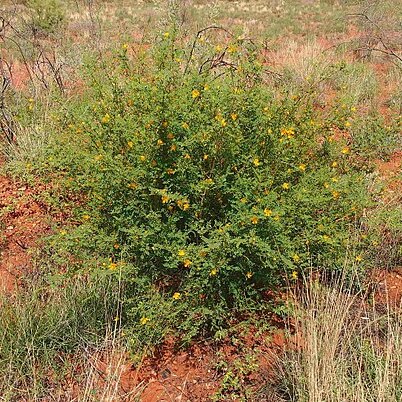A small shrub. It grows 0.7-2 m high and 1-2.5 m wide. The young growth is hairy. The leaves are about 15 cm long. They have leaflets along the stalk. There are 11-80 leaflets and they are 0.3-1.8 cm long by 0.5 cm wide. They are broadly oval and green. The flowers are 3 cm across and yellow with red markings. The pods are flat and brown and 2.5 cm long by 0.8 cm wide.

